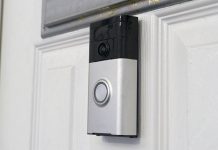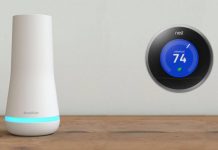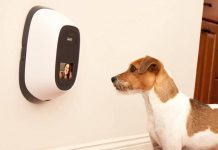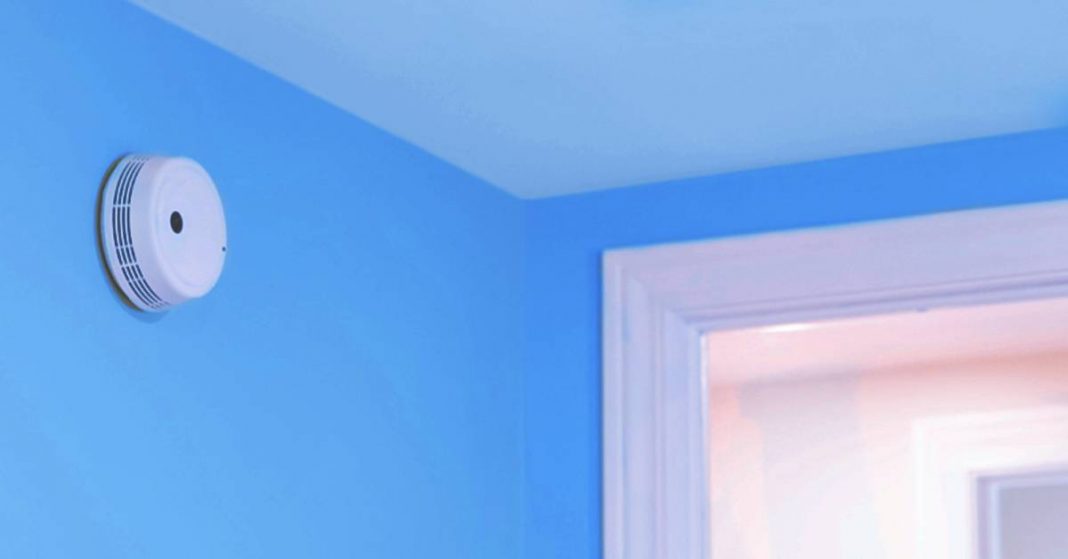UPDATED December 11, 2021 This piece has been updated to reflect the emergence of new technology


Christian Mathews Security Writer
You install smoke detectors as safety instruments to warn you in case of a fire accident. Different types of smoke detectors vary in the mechanism used to detect fire or gas leakage. Once the detectors detect fire they trigger an alarm sound that ought to wake you and alert you of the danger. Knowing where to install a smoke detector is just as important as having them.
There are differences in smoke detectors and carbon monoxide detectors as well as the placement, so make sure to have one and also know where to place a carbon monoxide detector.
Types Of Smoke Detectors
Since various types of detectors use different mechanisms to detect fire, the accuracy may differ based. The environment and position of the detectors are some of these factors. In general, there are three types of detectors, namely:
Ionization Detectors
Ionization detectors make use of electrodes of differing charges to maintain a current flow. When disturbed by smoke particles, it will cause the alarm to go off. These detectors are best suitable for detecting smoke from flaming fires.
Photoelectric Detectors
Photoelectric detectors make use of light beams, which when scattered by smoke, trigger an alarm. These detectors are best suitable for detecting smoldering fires
Dual Sensor Detectors
Dual sensor detectors use a combination of both ionization and photoelectric sensors to give better accuracy. Install dual combination detectors to be able to detect both types of fires.
Other Types Of Smoke Detectors
Besides these three types, there are also other types of detectors available such as heat detectors and carbon monoxide detectors.
Heat Detectors
Heat detectors sense the overall temperature rise and try to detect fire. However, these detectors can be slow. A heat rise may happen long after the fire has started when it is smoke that kills most people in a fire accident. It is best to use these in kitchens or cooking areas. This is helpful, as using an ionization detector can result in many false positives.
Where to Install Smoke Detector
Safety guidelines from government agencies put forth several do’s and don’ts concerning where smoke detectors should be placed. Here is a compilation of the most important guidelines
Do’s
- Install alarms that are certified by a recognized testing laboratory. You can find the standards certification and accreditation information on the label or gather related information from the manufacturer.
- Install smoke alarms in every part of your home. Each bedroom, living room, hall, the space near the stairways must be fitted with a smoke alarm.
- When you install smoke alarms in the basement, install them on the ceiling at the bottom of the stairway that leads to the upper floor.
- Install smoke alarms at the height of at least 10 feet away from a cooking alliance to avoid false alarms while cooking.
- The best place to install smoke alarms is near the ceiling. If you are using mounted alarms, make sure they are no more than 12 inches away from the ceiling.
- When installing alarms for a pitched ceiling, install the Alarm 3 feet within the peak anywhere other than the apex area.
- Keep the manufacturers’ instruction manual safe for future reference
- Replace smoke alarms once their lifetime is completed
- Hardwired interconnected alarms are the best choice available for better protection. Do make use of them.
- If using battery-operated smoke alarms, do check and replace batteries regularly.
Don’ts
- Avoid installing smoke alarms near windows, doors, and ducts as the drafts might disrupt the alarm mechanism.
- Do not paint on smoke alarms. Paint, dust, decorations, and stickers might cause the alarm to dysfunction
- Do not continue to use smoke alarms beyond their lifetime
- Don’t install near ceiling fans or air vents
- Avoid installing in garages as garages have cooler temperatures, which make it difficult to detect smoke or fire.
- Don’t install bear areas that collect dust and dirt like unfinished attics
- Humid and moist areas like bathrooms are also not suitable for installing smoke alarms.
How Many Smoke Detectors Are Required In A Home
A home requires as many smoke alarms as the number of rooms it has. In homes with two levels, install smoke alarms at the bottom of the stairway that leads to the upper level. Continue to follow the guidelines laid out above as to where to install a smoke detector.
Don’t forget to install alarms on basements, sunrooms, spa, and swimming pools as well. Include all the utility spaces like furnace rooms and laundry rooms as well.
Interconnect Alarms For Better Safety
The best smoke alarms that are interconnected offer better protection as they sound all alarms when just one detector is signaled. This creates a better warning signal. Consumer Product Safety Commission surveys show that interconnected alarms have been very effective in preventing fire accidents from spreading and worsening. Residents are alerted early and can take action themselves without any damage to property or life.
- The efficiency in interconnected alarms is shown by the following facts collected.
- Interconnected alarms sounded in about 53% of the fires and alerted 26% of people.
- In contrast, smoke alarms installed in every room could alert 15% of residents and sounded in about 37% of fires.
When you use interconnected alarms, make sure all the alarms are from the same manufacturer to avoid any compatibility issues.
Testing Of A Smoke Alarm
Test your smoke alarms regularly at least each month to ensure they are in good working condition. Most detectors come with a test button that can be aged to get an alarming fest sound. Some detectors also support remote control testing or need just a light shine to be tested.
Keep the smoke detector clean and free of dust and dirt for it to work accurately.
Life Of A Smoke Detector
Do replace your long-time smoke alarms every ten years. Hardwired smoke alarms with long life come with inbuilt batteries for a backup power source. Batteries usually have a lifetime of 10 years and you need to replace them immediately once the time is up. Note down the installation date of each alarm and replace them before they expire.
If you are using short-term battery-based alarms, replace the batteries at least once a year. This is also dependent on the average lifespan of the batteries used.

















































